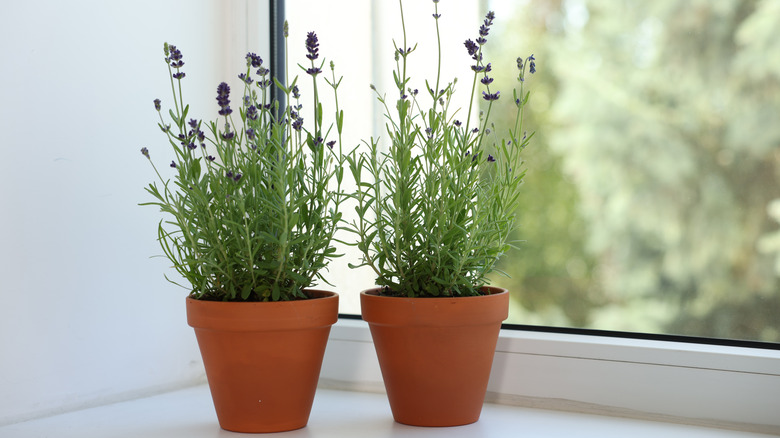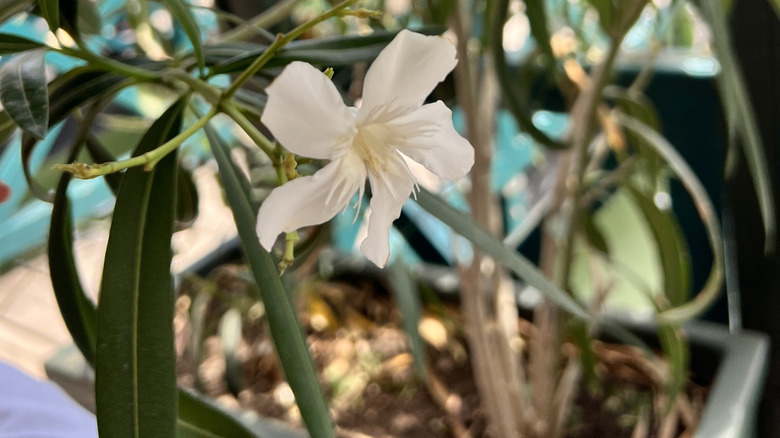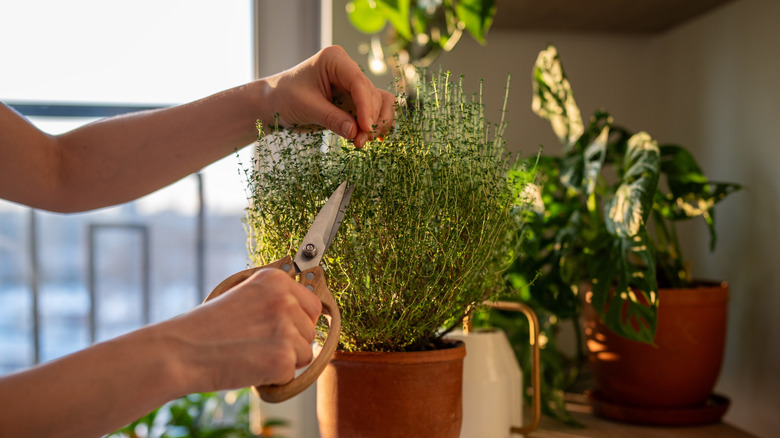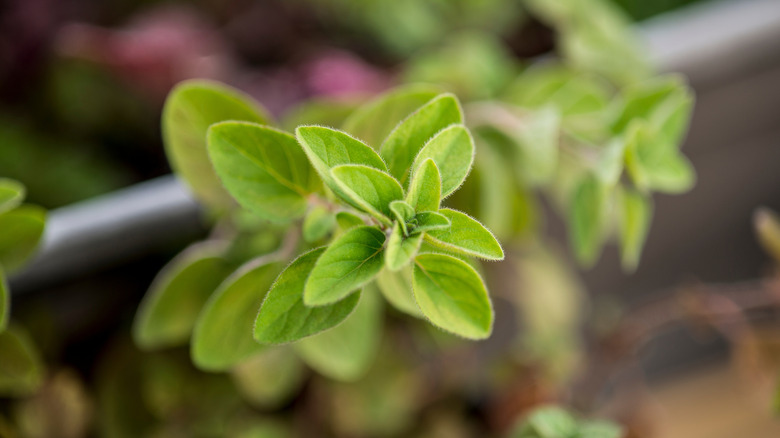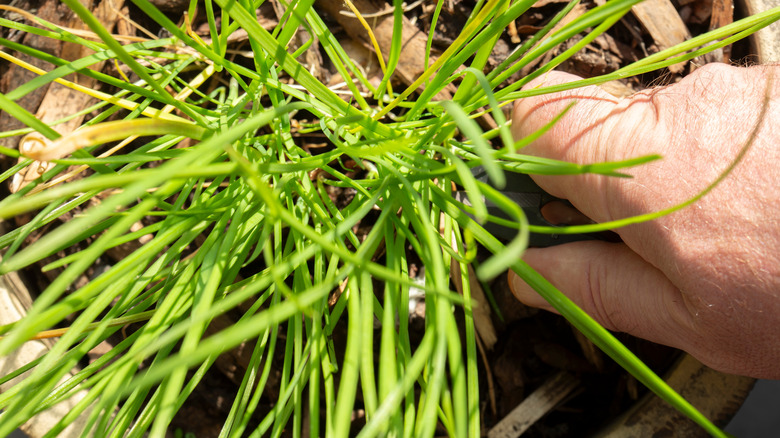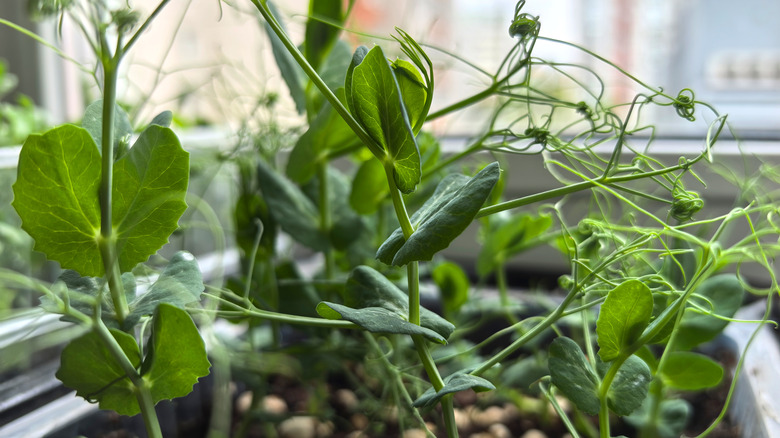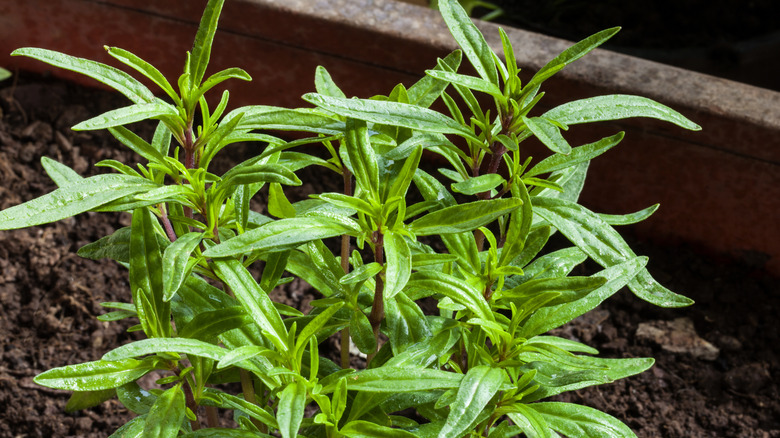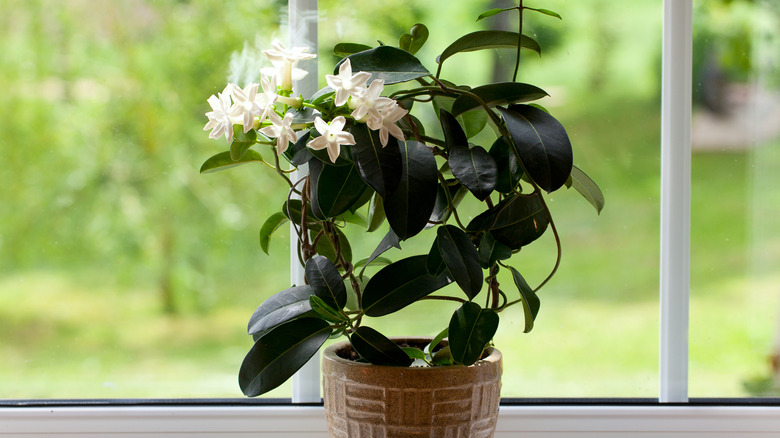11 Companion Plants You Can Grow With Lavender Indoors
People love growing lavender (Lavandula angustifolia) and for good reason. It looks pretty, smells amazing, and has a long flowering season. With its silvery foliage, soft purple-blue or pink flowers, and serrated leaves, it can fill any garden bed with alluring color, fragrance, and texture. But if you live outside USDA Hardiness Zones 5 to 8, you will need to bring lavender indoors for winter months. Likewise, some people grow luscious lavender indoors as a houseplant all year round for the same reasons they do outdoors. The problem with growing herbs indoors is that they're typically less productive. This is where companion plants like rosemary, thyme, sage, oregano, and even succulents like sedums or shrubs like sweet bay can help.
These plants provide support to your indoor lavender's health or complement its color or fragrance. For example, some companion plants keep common houseplant pests away. Others have contrasting or complementary foliage, which helps you create a cohesive indoor plant garden, or flowers with a scent that boosts that of lavender's blooms. When choosing companion plants to grow with your indoor lavender, look for greenery that is often grown as a houseplant and likes the same growing conditions. You want a plant that supports your lavender, not something that might end up needing all your time and energy. For instance, lavender thrives in sunny spots and likes its soil on the drier side. Avoid houseplants that prefer shady or moist conditions.
Rosemary
Rosemary (Salvia rosmarinus) is a herb prized for its fragrance, flavor, and beauty. It makes a great companion plant for lavender because its scent helps keep away the houseplant pests. However, when grown indoors, it needs temperatures on the cooler side: around 50 to 60 degrees Fahrenheit. Temperatures that we can be too warm for it, so keep the plant in a cooler or less-visited part of your home. Thankfully, the higher end of this spectrum sits on the lower end of lavender's preferred temperature range.
Oleander
Similarly to sweet bay, oleander is not cold hardy and must be overwintered indoors. If you're going to bring it inside anyway, why not pair it with lavender? Oleander (Nerium oleander) boasts clusters of colorful blooms — ranging in hue from red to pink, yellow to white — and dark green spiky foliage that makes for an exciting contrast with delicate, silvery lavender. It's relatively easy to grow indoors, requiring bright light like its lavender companion, though unlike lavender, it needs regular fertilization. The downside to this pretty plant is its toxicity — keep it out of reach of children and pets.
Thyme
Thyme (Thymus vulgaris) is a good choice for keeping indoor pests from your lavender and for adding low-growing greenery beneath your shrub. Avoid mistakes gardeners commonly make when growing thyme indoors or out. For instance, thyme — like lavender — needs at least six to eight hours of sunlight daily, so put it in a bright spot. If you don't think it's getting enough sun, add some grow lights. Also, make sure that the soil is not compacted or holding excess moisture as this can cause root rot. In fact, the same goes for your lavender.
Oregano
Oregano (Origanum vulgare) is a popular culinary herb that's often confused with marjoram. It can help deter aphids and possibly other common houseplant pests from your indoor lavender plants with its strongly scented, carvacrol- and thymol-containing leaves. Like lavender, this plant needs plenty of sunlight, so a south-facing window works best for both plants. Place your potted lavender on the north side of the oregano so it doesn't cast a shadow over the low-growing herb. As with thyme, if you don't have enough natural light at home, use artificial lights to make up the shortfall.
Sedum
If you are growing lavender indoors in a large planter, consider filling the space between its trunk and the pot's edge with your favorite sedum (Sedum spp.), also known as stonecrop. The fleshy, sculptural leaves of pretty much every sedum species and cultivar contrast dramatically with the lavender's delicate foliage, creating visual interest. Try 'October Daphne' sedum for its purple-pink hued leaves, or 'Rosy Glow' sedum for its petite size and dramatic stems full of fleshy rosettes. Stonecrops also love the sun and dislike damp conditions, just like lavender.
Sage
Sage (Salvia officinalis), a herb in the mint family, is a useful companion plant for lavender if you want to combine beauty with practicality. Both plants have leaves with a silvery or purple hue, meaning they look good when potted up next to one another on a sunny kitchen windowsill. What's more, compounds in sage's scent can boost that of lavender's. The herb is low-maintenance and easy to grow indoors from seeds or cuttings — though seeds will take longer. Like lavender, it prefers well-draining soil, especially in winter.
Chives
Chives (Allium schoenoprasum) are another easy-to-grow herb you'll want to plant indoors alongside potted lavender. Like oregano and some other fragrant herbs in this list, their distinctive odor helps keep pests like aphids away from your houseplants. Grow lavender and chives next to one another in a sunny, bright spot in your home. You can use the same well-draining soil for both plants, making care easy, though chives prefer a slightly moist environment. If your chives start to bend towards the sun, just rotate the container a quarter turn. This method should fix a wonky indoor lavender, too.
Green pea
If you have a large indoor garden and want to branch out from herbs, try growing green peas (Lathyrus oleraceus). You could, for example, place your potted lavender in a sunny window and grow peas in a large pot with a wire cage behind it. The planter should be at least 12 inches deep and hold about two gallons of soil. Peas are legumes and will provide you with vegetables to eat and nitrogen-rich soil. Lavender needs little fertilization, so repotting your plant into this soil could be enough to help it thrive.
Sweet bay
Sweet bay (Laurus nobilis), also known as blue laurel, doesn't survive frost, so it needs to be brought indoors in winter in most areas. Why not put it beside your potted lavender and take advantage of its companion plant benefits? It can help keep away moths and weevils and, as an added bonus, mosquitoes hate it — which is more for your benefit than the lavender's. Sweet bay shrubs can get large, so make sure you leave enough space between planters. Lavender doesn't like to be crowded, nor does it like shade.
Summer savory
Its name might suggest otherwise, but you can easily grow summer savory (Satureja hortensis) indoors in winter — or, indeed, at any time of the year. Like lavender, it needs a location that gets plenty of sunshine hours (or, again, you can use grow lights). Similarly to oregano, its stems and leaves are rich in the volatile oils carvacrol and thymol. These compounds give the herb its distinctive scent and flavor, but also have insecticidal properties, making summer savory another excellent companion plant for keeping indoor plant pests from plaguing your lavender.
Jasmine
Jasmine (Jasminum spp.) is a pretty addition to any indoor garden. It has a scent that pairs well with that of lavender. Plant them near one another, and they will fill the air in your home with irresistible, perfume-like fragrance. While this plant is considered a pest outdoors in many parts of the U.S., it's unlikely to be a problem when grown indoors. It thrives in a similar temperature range to lavender, but prefers indirect (though also bright) light. Grow a vining jasmine, like Spanish jasmine (Jasminum officinale var. grandiflorum), high above your lavender shrub in a hanging planter.
